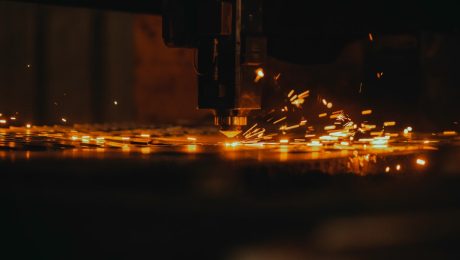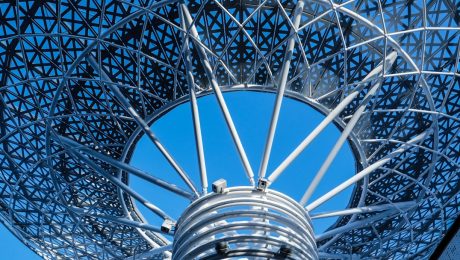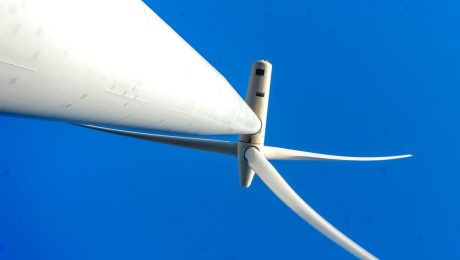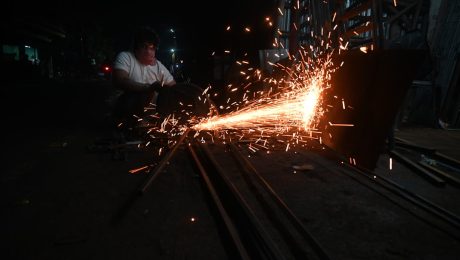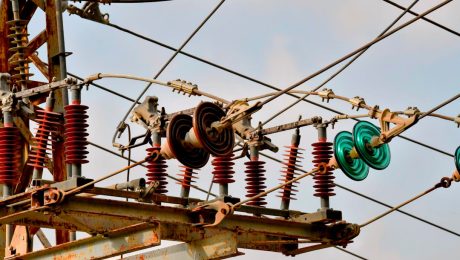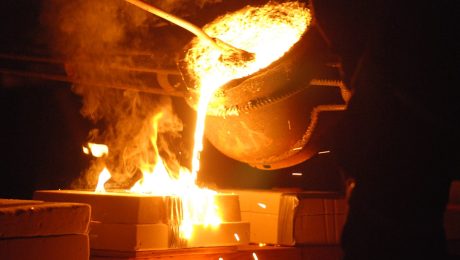body { font-family: sans-serif; line-height: 1.6; }
h1, h2, h3 { color: #333; }
h1 { font-size: 2.5em; }
h2 { font-size: 2em; }
h3 { font-size: 1.5em; }
The steel industry is a complex landscape, fraught with technical specifications, fluctuating prices, and a myriad of supplier options. For steel buyers, navigating this maze can be overwhelming, leading to costly mistakes and project delays. This is where expert technical consulting steps in, offering invaluable support and guidance to optimize your steel procurement process.
Understanding Your Steel Needs: The Foundation of Successful Procurement
Before even considering suppliers, a thorough understanding of your specific steel requirements is paramount. Technical consultants help you define these needs precisely. This involves:
- Material Selection: Determining the appropriate steel grade (e.g., carbon steel, stainless steel, alloy steel) based on the application’s demands for strength, corrosion resistance, weldability, and other critical properties.
- Dimensional Requirements: Specifying exact dimensions, tolerances, and surface finishes to ensure the steel meets your project’s precise needs and avoids costly rework.
- Quantity and Delivery Schedule: Accurately forecasting your needs to optimize inventory management and minimize storage costs while ensuring timely delivery to avoid production delays.
A consultant’s expertise ensures you choose the right steel for the job, avoiding overspending on unnecessarily high-grade materials or compromising on quality by selecting inadequate options.
Navigating Steel Specifications and Standards: Demystifying the Jargon
Steel specifications and industry standards (e.g., ASTM, ASME, EN) can be incredibly complex. Technical consultants possess in-depth knowledge of these standards, enabling them to:
- Interpret complex specifications: They translate technical jargon into plain language, ensuring you fully understand what you’re buying and avoid misunderstandings with suppliers.
- Ensure compliance: They help you select materials that meet all relevant industry regulations and safety standards, preventing legal issues and potential safety hazards.
- Negotiate effectively with suppliers: Their expertise allows for informed discussions with suppliers, ensuring you obtain the best possible price and quality without compromising on specifications.
This expertise saves time, prevents costly errors, and ensures your project aligns with industry best practices.
Quality Control and Assurance: Protecting Your Investment
Maintaining quality throughout the steel supply chain is critical. Technical consultants offer support in:
- Supplier Selection and Due Diligence: They help identify reputable suppliers with proven track records of quality and reliability, minimizing the risk of receiving substandard materials.
- Inspection and Testing: They can oversee the inspection and testing of incoming materials to ensure they meet specified requirements, identifying and addressing any defects early on.
- Implementing Quality Management Systems: They can assist in establishing and maintaining robust quality management systems throughout your organization, improving overall efficiency and reducing waste.
This proactive approach minimizes the risk of defects and ensures that the steel you receive meets the highest quality standards.
Cost Optimization and Supply Chain Management: Maximizing Efficiency
Steel prices can fluctuate significantly, impacting project budgets. Technical consultants help you control costs by:
- Market Analysis and Price Negotiation: They leverage their market knowledge to negotiate favorable pricing with suppliers, taking advantage of market trends and opportunities.
- Supply Chain Optimization: They analyze your supply chain to identify inefficiencies and recommend improvements, such as optimizing transportation routes or streamlining inventory management.
- Lifecycle Cost Analysis: They consider the total cost of ownership, including initial purchase price, processing costs, and potential maintenance, to help you make informed decisions.
By optimizing your steel procurement processes, consultants help reduce overall costs and improve the efficiency of your operations.
Leveraging Technology for Enhanced Steel Procurement
The steel industry is increasingly adopting advanced technologies. Technical consultants can help you leverage these advancements to enhance your procurement processes. This includes:
- Digital Platforms and Data Analytics: Utilizing software and data analytics tools to track market trends, manage inventory, and optimize procurement processes.
- Blockchain Technology: Exploring the use of blockchain for enhanced transparency and traceability in the supply chain, ensuring the authenticity and origin of steel materials.
- AI-powered Predictive Modeling: Employing AI to forecast future steel needs and optimize inventory levels, minimizing storage costs and preventing shortages.
Embracing these technologies can significantly improve the efficiency and effectiveness of your steel procurement strategy.
In conclusion, engaging technical consulting services for steel buyers offers a significant return on investment. By providing expert guidance throughout the entire procurement process, consultants help mitigate risks, optimize costs, and ensure the highest quality materials are used, ultimately contributing to the success of your projects.
Tags:
steel consulting, steel buyer, technical consulting, steel procurement, cost optimization
Universal Parallel Flange (UPN) profiles, also known as parallel flange channels, are ubiquitous in structural engineering. Their versatility and efficiency make them a preferred choice for a wide range of applications. This comprehensive guide delves into the intricacies of UPN profiles, exploring their properties, design considerations, and suitability for various projects.
Understanding UPN Profile Geometry and Properties
UPN profiles are characterized by their parallel flanges and a single web connecting them. This unique geometry provides excellent bending stiffness and resistance to shear forces. Key properties engineers consider include:
- Section Modulus (Zx, Zy): This indicates the resistance to bending about the x and y axes, crucial for determining the bending capacity of the profile.
- Moment of Inertia (Ix, Iy): Represents the resistance to bending deformation about the respective axes. Higher values indicate greater stiffness.
- Area (A): The total cross-sectional area of the profile, directly related to its weight and overall strength.
- Weight per unit length: A critical factor in cost estimation and overall structural weight.
- Radius of Gyration (rx, ry): Indicates the distribution of the area around the centroidal axes, influencing the stability of the profile against buckling.
These properties are readily available in steel section manuals and online databases, allowing engineers to select the most appropriate UPN profile for a given application.
Common Applications of UPN Profiles in Structural Design
The versatility of UPN profiles makes them suitable for a diverse range of applications within structural engineering, including:
- Beams and Lintels: Their parallel flanges provide excellent support for loads, making them ideal for beams in buildings and other structures.
- Columns and Supports: When used vertically, UPN profiles can effectively support axial loads, especially in lightweight constructions.
- Bracing and Stiffening Members: Their shape allows for effective bracing of larger structures, improving overall stability.
- Industrial Structures: UPN profiles are frequently used in the construction of workshops, warehouses, and other industrial buildings.
- Cladding and Roofing Systems: They can serve as supporting members for cladding and roofing materials.
- Handrails and Balustrades: Their strength and relatively lightweight nature make them suitable for various railing systems.
The specific application will dictate the size and grade of UPN profile required.
Design Considerations for UPN Profiles
Designing with UPN profiles requires careful consideration of several factors:
- Load Calculations: Accurate determination of the loads acting on the structure is paramount. This includes dead loads (weight of the structure itself), live loads (occupancy loads, snow loads), and wind loads.
- Stress Analysis: Engineers must analyze the stresses induced in the UPN profiles due to bending, shear, and axial forces. Software tools are often used for this purpose.
- Buckling Considerations: Slender UPN profiles are susceptible to buckling under compressive loads. Design checks must ensure adequate resistance against buckling failure.
- Connections: Proper connection design is crucial for transferring loads effectively from the UPN profile to other structural elements. Welding, bolting, and other connection methods must be carefully selected and detailed.
- Corrosion Protection: Steel profiles are prone to corrosion. Appropriate measures such as galvanization or painting should be implemented to protect the UPN profiles from environmental degradation.
Ignoring any of these considerations can lead to structural failure.
Advantages and Limitations of Using UPN Profiles
UPN profiles offer several advantages:
- High Strength-to-Weight Ratio: They provide excellent strength relative to their weight, resulting in cost-effective designs.
- Versatility: Suitable for a wide range of applications.
- Easy Fabrication and Installation: Relatively easy to cut, weld, and bolt, simplifying construction.
- Cost-Effective: Generally less expensive than other structural sections like I-beams for certain applications.
- Readily Available: Widely available from steel suppliers.
However, there are limitations:
- Susceptibility to Buckling: Slender profiles can be prone to buckling under compressive loads, requiring careful design considerations.
- Limited Shear Capacity: Compared to other sections, their shear capacity might be lower in some cases.
- Corrosion: Requires protection against corrosion.
UPN Profile Selection and Material Grades
Selecting the appropriate UPN profile involves considering the required strength, stiffness, and stability for the specific application. Several factors influence this choice:
- Load requirements: The magnitude and type of loads acting on the profile.
- Span length: The distance between supports significantly impacts bending stresses.
- Support conditions: The type of supports (simply supported, fixed, cantilever) affects the bending moment distribution.
- Material grade: Steel grades are specified by their yield strength (e.g., S275, S355). Higher yield strength grades offer greater capacity but may be more expensive.
- Manufacturing tolerances: It is essential to consider the manufacturing tolerances when calculating the structural capacity of the profile.
Consulting relevant design codes and standards (e.g., Eurocode 3) is essential for proper selection and design.
In conclusion, UPN profiles are valuable tools in a structural engineer’s arsenal. By understanding their properties, applications, and limitations, engineers can effectively utilize these versatile sections to create efficient and safe structures.
Tags: UPN profile, structural steel, parallel flange channel, steel section design, engineering calculations
Wind turbines, the silent giants of renewable energy, rely on a complex interplay of components to harness the power of the wind. While the blades themselves capture the kinetic energy, their performance and longevity depend critically on a robust and reliable support system. This system, often overlooked, plays a pivotal role in ensuring the efficient and safe operation of the entire turbine. This post delves into the intricacies of wind turbine blade support systems, exploring their design, materials, maintenance, and the future innovations shaping this vital aspect of wind energy technology.
1. The Anatomy of a Blade Support System: A Multifaceted Design
A wind turbine blade support system is far more than just a simple connection. It’s a sophisticated assembly designed to withstand immense forces, including centrifugal forces generated by blade rotation, aerodynamic loads from wind gusts, and the weight of the blade itself. The key components typically include:
- Pitch Bearing: This crucial component allows for the adjustment of the blade’s angle (pitch) to optimize energy capture and protect the turbine during high winds. It’s often a sophisticated bearing system capable of withstanding significant loads and precise adjustments.
- Main Bearing: Located at the hub, the main bearing supports the entire rotor assembly, including the blades and the hub itself. It’s designed to handle immense radial and axial loads and typically employs advanced rolling element bearings or hydrodynamic bearings.
- Hub: The central component connecting the blades to the low-speed shaft. The hub’s design is critical for distributing loads evenly across the blades and ensuring proper alignment.
- Blade Root Connection: This is the interface between the blade and the hub. It’s a crucial area, often incorporating specialized bolts, flanges, or composite structures designed for high strength and fatigue resistance.
- Structural Support within the Blade: The blade itself contains internal structures (spar caps, shear webs) that distribute the loads from the root to the tip, working in concert with the hub and pitch bearing.
2. Materials Science: Choosing the Right Stuff for Extreme Conditions
The materials used in blade support systems must possess exceptional strength, fatigue resistance, and durability to withstand the harsh environmental conditions and cyclical loading experienced during operation. Common materials include:
- High-Strength Steels: Used in many hub components and critical connections due to their high tensile strength and fatigue resistance.
- Advanced Composites: Increasingly used in blades and hub components, offering a high strength-to-weight ratio and superior fatigue performance. Carbon fiber reinforced polymers (CFRP) and glass fiber reinforced polymers (GFRP) are prominent examples.
- Specialized Alloys: Specific alloys, such as those with enhanced corrosion resistance, are employed in critical areas exposed to moisture and salt spray.
- Advanced Lubricants: High-performance lubricants are essential for extending the lifespan of bearings and reducing friction. These lubricants must be resistant to extreme temperatures and environmental conditions.
3. Maintenance and Inspection: Ensuring Operational Reliability
Regular maintenance and inspection of the blade support system are crucial for ensuring the safe and efficient operation of the wind turbine. This involves:
- Visual Inspections: Regular visual checks for signs of damage, corrosion, or wear and tear.
- Vibration Monitoring: Continuous or periodic monitoring of vibration levels to detect early signs of bearing failure or other mechanical issues.
- Lubrication Schedules: Adherence to scheduled lubrication procedures to maintain optimal bearing performance.
- Non-Destructive Testing (NDT): Techniques such as ultrasonic testing or radiographic inspection are used to detect internal flaws in critical components.
- Component Replacement: Proactive replacement of worn or damaged components to prevent catastrophic failures.
4. The Impact of Design Innovations: Enhancing Performance and Reducing Costs
Continuous innovation in blade support system design is driving improvements in efficiency, reliability, and cost-effectiveness. Key areas of innovation include:
- Lightweight Designs: Reducing the weight of the blade and hub assembly reduces stress on the support system and lowers manufacturing costs.
- Improved Bearing Technologies: Advances in bearing design and materials are leading to longer bearing lifespans and reduced maintenance requirements.
- Advanced Monitoring Systems: Real-time monitoring systems provide valuable data for predictive maintenance, minimizing downtime and optimizing operational efficiency.
- Optimized Blade-Hub Connections: Innovative designs for blade root connections improve load distribution and fatigue resistance.
5. The Future of Blade Support Systems: Towards a Greener Tomorrow
The future of wind turbine blade support systems is closely tied to the ongoing drive for larger, more efficient, and cost-effective wind turbines. This includes:
- Development of novel materials: Research into advanced composites and high-strength alloys will continue to improve the strength-to-weight ratio and fatigue resistance of critical components.
- Integration of smart technologies: The incorporation of sensors and data analytics will enable predictive maintenance and real-time optimization of turbine performance.
- Focus on sustainability: Increased use of recycled materials and sustainable manufacturing processes will reduce the environmental footprint of wind turbine blade support systems.
- Modular designs: Modular designs will simplify maintenance, repair, and component replacement, reducing downtime and costs.
In conclusion, the seemingly simple task of supporting wind turbine blades is actually a complex engineering challenge. The ongoing advancements in materials science, design, and maintenance strategies are crucial for maximizing the efficiency, reliability, and lifespan of these vital components, ultimately contributing to a more sustainable energy future.
SEO Tags: Wind Turbine Blades, Blade Support Systems, Wind Turbine Maintenance, Wind Turbine Bearings, Renewable Energy Technology
body { font-family: sans-serif; line-height: 1.6; }
h1, h2, h3 { color: #333; }
img { max-width: 100%; height: auto; }
Equal angle bars, also known as equal leg angles, are ubiquitous in construction, manufacturing, and various other industries. These versatile structural components, characterized by their L-shape with two legs of equal length, offer a unique combination of strength, rigidity, and ease of fabrication. This comprehensive guide delves into the world of equal angle bars, exploring their properties, applications, and the factors to consider when selecting them for your projects.
Understanding the Properties of Equal Angle Bars
The defining characteristic of an equal angle bar is its two legs of identical length, forming a right angle. This symmetrical design contributes significantly to its structural capabilities. They are typically manufactured from various materials, including mild steel, stainless steel, and aluminum, each offering distinct properties. Mild steel is the most common choice due to its excellent strength-to-weight ratio and cost-effectiveness. Stainless steel provides superior corrosion resistance, making it ideal for outdoor or marine applications. Aluminum offers lightweight strength, beneficial in situations where weight reduction is crucial.
The dimensions of equal angle bars are standardized, typically expressed in terms of leg length and thickness. These dimensions are critical for structural calculations and ensuring compatibility with other components. The choice of material and dimensions significantly impacts the overall strength, stiffness, and weight of the bar. Understanding these properties is crucial for proper selection and application.
Manufacturing Processes of Equal Angle Bars
Equal angle bars are primarily manufactured through hot-rolling processes. This involves heating the raw material (typically steel billets) to a high temperature, then passing it through a series of rollers to shape it into the desired L-shape. The hot-rolling process allows for efficient mass production and imparts superior mechanical properties to the finished product. After hot-rolling, the bars may undergo further processing, such as cutting to length, surface treatment (e.g., galvanizing for corrosion protection), or heat treatment to enhance specific properties.
Precision is paramount in the manufacturing process to ensure dimensional accuracy and consistency. Strict quality control measures are implemented throughout the production chain to guarantee that the finished equal angle bars meet the required specifications and standards. This attention to detail is crucial for ensuring the structural integrity of any application utilizing these components.
Diverse Applications of Equal Angle Bars Across Industries
The versatility of equal angle bars makes them indispensable across a wide range of industries. In construction, they are extensively used as structural supports in buildings, bridges, and other infrastructure projects. Their ability to withstand significant loads and their ease of welding and bolting make them ideal for creating robust frameworks. They are frequently used in creating support structures for roofs, walls, and floors.
In the manufacturing sector, equal angle bars find applications in creating machinery frames, jigs, fixtures, and other industrial components. Their strength and rigidity ensure the stability and accuracy of these components. They also serve as excellent bracing elements, improving the overall stability and durability of manufactured goods.
Furthermore, equal angle bars are used in various other applications, including: automotive parts, furniture manufacturing, agricultural equipment, and even artistic creations. Their adaptability and availability contribute to their widespread use.
Advantages of Using Equal Angle Bars in Construction and Manufacturing
The popularity of equal angle bars stems from several key advantages: Firstly, they offer excellent strength and rigidity relative to their weight, making them cost-effective structural solutions. Secondly, their L-shape allows for easy connection to other structural elements through welding, bolting, or riveting. This simplifies the fabrication process and reduces assembly time.
Thirdly, equal angle bars are readily available in various sizes and materials, allowing for flexibility in design and application. This wide selection ensures that engineers can choose the most suitable option for specific project requirements. Fourthly, their relatively low cost compared to other structural shapes makes them an economically viable choice for many applications.
Selecting the Right Equal Angle Bar: Key Considerations
Choosing the appropriate equal angle bar requires careful consideration of several factors. The material selection depends on the application’s environmental conditions and required properties. Mild steel is suitable for most indoor applications, while stainless steel or aluminum are preferred for corrosive environments or weight-sensitive designs.
The dimensions of the angle bar are crucial for ensuring sufficient strength and stiffness. These dimensions are determined based on the anticipated loads and stresses the bar will experience. Proper engineering calculations are essential to avoid structural failure. Furthermore, surface treatment, such as galvanizing or painting, should be considered to protect the bar from corrosion and enhance its lifespan, especially in outdoor or harsh environments. Finally, adhering to relevant industry standards and building codes is essential to ensure safety and compliance.
Equal angle bars are fundamental structural components with a wide range of applications. Understanding their properties, manufacturing processes, and selection criteria is crucial for engineers, designers, and anyone involved in projects utilizing these versatile materials.
SEO-Friendly Tags:
Equal Angle Bars, Equal Leg Angles, Steel Angle Bars, Structural Steel Angles, Metal Angle Bars
Industrial steel frame projects are the backbone of modern manufacturing, warehousing, and logistics. Their robust nature, speed of construction, and cost-effectiveness make them a popular choice for a wide range of applications. This comprehensive guide will delve into the key aspects of these projects, providing valuable insights for anyone involved in the design, construction, or management of industrial facilities.
The Design and Engineering of Industrial Steel Frames
The design phase is critical for the success of any steel frame project. It involves detailed calculations to ensure structural integrity, considering factors like anticipated loads (live and dead), wind speeds, seismic activity (depending on location), and snow loads. Sophisticated software is employed for structural analysis, ensuring optimal design for strength and efficiency. This stage also includes the selection of appropriate steel grades, connection types (bolted or welded), and the overall layout of the building, incorporating considerations for future expansion or modifications. Detailed drawings and specifications are produced, forming the basis for the construction phase. Collaboration between engineers, architects, and contractors is crucial to ensure a smooth and efficient process.
Construction Techniques and Best Practices for Steel Frame Projects
The construction of industrial steel frame buildings typically involves a phased approach. First, the foundation is prepared, often consisting of concrete footings or piles, depending on the soil conditions and building load. Then, prefabricated steel components are delivered to the site. These components, often fabricated off-site for increased precision and speed, are assembled using cranes and other heavy machinery. Welding and bolting are crucial processes, requiring skilled welders and certified technicians to ensure accurate and strong connections. Quality control is paramount throughout the construction process, with regular inspections to ensure compliance with design specifications and safety standards. Efficient project management is key to maintaining timelines and budgets.
Cost-Effectiveness and Return on Investment (ROI) in Steel Frame Construction
One of the primary advantages of steel frame construction is its cost-effectiveness. The speed of construction translates to reduced labor costs and shorter project timelines. Prefabrication minimizes on-site work, reducing potential delays and associated expenses. Steel is a relatively inexpensive material compared to other construction materials like concrete, contributing to lower overall project costs. Furthermore, the long lifespan and low maintenance requirements of steel structures offer a significant return on investment over the long term. The potential for future expansion or modification is another factor that enhances the ROI, as steel structures are easily adaptable to changing needs.
Common Applications and Case Studies of Industrial Steel Frame Buildings
Industrial steel frame buildings are incredibly versatile and find application across a broad spectrum of industries. They are commonly used for warehouses, distribution centers, manufacturing plants, factories, and workshops. Large-scale storage facilities, agricultural structures (like barns and greenhouses), and even certain types of commercial buildings can benefit from the strength and efficiency of steel frames. Numerous case studies demonstrate the successful implementation of steel frame construction in various contexts, showcasing its adaptability and effectiveness in diverse climates and geographical locations. Examples might include a high-bay warehouse with automated storage and retrieval systems or a climate-controlled manufacturing facility.
Sustainability and Environmental Considerations in Steel Frame Projects
While steel production has an environmental footprint, the use of steel in construction offers several sustainability advantages. Steel is a highly recyclable material, reducing the demand for virgin resources. The durability and longevity of steel structures minimize the need for frequent replacements, reducing waste and the carbon footprint associated with demolition and rebuilding. Furthermore, the speed of construction and reduced waste generation during the construction process contribute to a smaller overall environmental impact compared to some traditional construction methods. The use of sustainable construction practices, such as minimizing energy consumption during the construction phase and incorporating energy-efficient building design features, further enhances the environmental benefits of steel frame projects. Increasingly, green steel initiatives are focusing on reducing the carbon footprint of steel production itself, further bolstering its sustainability credentials.
In conclusion, industrial steel frame projects represent a powerful and efficient solution for a wide range of industrial and commercial needs. By understanding the design principles, construction techniques, cost-effectiveness, and sustainability aspects, stakeholders can make informed decisions and leverage the strengths of steel frame construction to create durable, efficient, and environmentally responsible facilities.
SEO Tags:
- Industrial Steel Frame
- Steel Building Construction
- Steel Structure Design
- Industrial Construction Projects
- Warehouse Construction
In industries where equipment faces harsh environments and significant impact forces, the reliability of connections is paramount. Failure can lead to downtime, damage, and even safety hazards. This is where shock-resistant connection systems step in, providing robust and dependable solutions for maintaining connectivity under extreme conditions. This blog post delves deep into the world of these crucial systems, exploring their design principles, applications, and future advancements.
1. Design Principles of Shock-Resistant Connectors
Designing a shock-resistant connection system requires a multi-faceted approach that considers several key factors. The primary goal is to mitigate the transmission of shock and vibration to the connection interface. This is achieved through a combination of techniques:
- Redundancy: Employing multiple connection points or using a system with inherent redundancy ensures that a single point of failure doesn’t compromise the entire connection.
- Flexible Elements: Incorporating flexible components, such as bellows or elastomeric materials, allows for some movement and absorption of shock energy, preventing direct transmission to the connection itself.
- Dampening Mechanisms: Utilizing materials with high damping properties, like certain polymers or specially designed metal alloys, dissipates vibrational energy, reducing the impact on the connection.
- Over-engineered Connections: Designing connections with a higher strength and durability than strictly required for normal operation provides a safety margin to withstand unexpected impacts.
- Optimized Geometry: The shape and geometry of the connector play a significant role. Rounded edges and smooth transitions minimize stress concentrations that can lead to failure under shock.
2. Materials Used in Robust Connection Systems
The choice of materials is crucial for achieving the desired level of shock resistance. Common materials include:
- High-Strength Alloys: Steels, titanium alloys, and other high-strength metals offer excellent tensile strength and fatigue resistance, making them ideal for applications with significant impact loads.
- Engineering Plastics: Polymers such as PEEK, PEI, and high-performance thermoplastics provide a good balance of strength, flexibility, and impact resistance, often at a lower weight than metals.
- Elastomers: Rubber, silicone, and other elastomeric materials are used extensively for vibration damping and shock absorption. Their ability to deform and recover energy helps to protect the connection from damage.
- Composites: Combining different materials, such as carbon fiber reinforced polymers, allows for the tailoring of specific properties to meet the demands of a particular application. This can lead to lightweight yet extremely strong connectors.
3. Applications of Shock-Resistant Connection Technologies
The need for reliable connections in harsh environments spans a wide range of industries:
- Aerospace: Aircraft and spacecraft components require robust connections to withstand the stresses of launch, flight, and landing.
- Automotive: Shock-resistant connectors are essential in vehicles to ensure the reliable operation of critical systems, even in accidents.
- Military and Defense: Military equipment operates in extreme conditions, demanding connections that can withstand significant impacts and vibrations.
- Industrial Automation: Robotics and automated systems often use shock-resistant connectors to maintain reliable communication in demanding factory environments.
- Oil and Gas: Equipment used in offshore platforms and drilling operations needs to withstand harsh marine environments and potential impacts.
4. Testing and Certification of Shock-Resistant Connectors
Rigorous testing is crucial to ensure the performance and reliability of shock-resistant connection systems. These tests often involve:
- Impact Tests: Simulating impacts of varying magnitudes and directions to determine the connector’s ability to withstand shocks.
- Vibration Tests: Exposing the connectors to various frequencies and amplitudes of vibration to assess their resistance to fatigue and loosening.
- Environmental Tests: Evaluating the connector’s performance under extreme temperature, humidity, and pressure conditions.
- Durability Tests: Assessing the connector’s long-term performance under repeated cycles of shock and vibration.
- Pull-out and Shear Tests: Measuring the connector’s resistance to forces that might cause disconnection.
Certification from relevant organizations provides assurance of a connector’s quality and performance, meeting specific industry standards.
5. Future Trends in Shock-Resistant Connection Systems
Ongoing research and development are continuously improving the capabilities of shock-resistant connection systems. Future trends include:
- Smart Connectors: Incorporating sensors and data logging capabilities to monitor the condition of the connection and provide early warnings of potential failures.
- Self-healing Materials: Developing connectors with materials that can repair themselves after minor damage, enhancing their longevity and reliability.
- Advanced Simulation Techniques: Using sophisticated computer simulations to optimize the design of connectors and predict their performance under various conditions.
- Additive Manufacturing: Utilizing 3D printing to create complex geometries and customized connectors with enhanced shock resistance.
- Miniaturization: Developing smaller, lighter, and more compact connectors that maintain high levels of shock resistance.
In conclusion, shock-resistant connection systems are critical components in various industries, ensuring the reliable operation of equipment in demanding environments. Understanding their design principles, materials, applications, testing, and future trends is vital for engineers and designers seeking robust and dependable solutions.
Tags: shock resistant connectors, impact resistant connections, vibration damping connectors, robust connectors, secure connections
In today’s interconnected world, businesses and individuals alike rely heavily on global delivery networks to move goods across borders. Understanding this complex process is crucial for success, whether you’re a multinational corporation or an online seller reaching international customers. This guide delves into the intricacies of global delivery, breaking down each stage for a clearer understanding.
1. Order Placement and Processing: The Starting Point of Global Delivery
The global delivery journey begins with an order. This stage involves receiving the order, verifying the customer’s details, including the correct shipping address (including postal codes and any necessary customs information), and processing the payment. Accurate order processing is paramount; any errors at this stage can cause significant delays or even failure of delivery. Businesses often utilize order management systems (OMS) to streamline this process, automating tasks like inventory checks and generating shipping labels. Effective communication with the customer is key, keeping them informed about the order status and estimated delivery timeframe.
2. Packaging and Warehousing: Preparing Goods for International Transit
Once the order is processed, the goods need to be carefully packaged for international transit. This involves selecting appropriate packaging materials to protect the goods from damage during shipping. International shipping often involves rough handling, so robust packaging is crucial. The packaging should also clearly display the shipping labels, including the recipient’s address, the sender’s address, and any necessary customs declarations. Warehousing plays a vital role, ensuring efficient storage and retrieval of goods before shipment. Strategic warehousing locations can significantly reduce shipping times and costs. Efficient warehouse management systems (WMS) track inventory, optimize storage space, and manage the picking and packing process.
3. Customs Clearance and Documentation: Navigating International Regulations
This is arguably the most complex stage of global delivery. International shipments must comply with various customs regulations in both the exporting and importing countries. This involves preparing the necessary documentation, such as commercial invoices, packing lists, certificates of origin, and potentially other specific documents depending on the goods being shipped and the countries involved. Incorrect or incomplete documentation can lead to delays, fines, or even the seizure of goods. Customs brokers are often employed to navigate the complexities of customs regulations, ensuring a smooth and compliant process. Understanding Harmonized System (HS) codes, which classify products for customs purposes, is also essential for accurate documentation.
4. Transportation and Logistics: Choosing the Right Shipping Method
The choice of transportation method significantly impacts the cost and speed of delivery. Options include air freight, ocean freight, and road freight, each with its own advantages and disadvantages. Air freight is the fastest but most expensive option, suitable for time-sensitive shipments. Ocean freight is the most cost-effective but slowest option, ideal for large volumes of less time-sensitive goods. Road freight is often used for shorter distances or as a part of a multimodal transport solution. Logistics providers play a crucial role in selecting the optimal transportation method, managing the shipment’s journey, and tracking its progress. Real-time tracking systems provide visibility into the shipment’s location and status.
5. Final Delivery and Customer Service: Completing the Global Delivery Process
The final stage involves the actual delivery of the goods to the recipient. This may involve handing over the package to a local courier for last-mile delivery. Effective communication with the customer is vital throughout the delivery process, providing updates and addressing any queries. Customer service plays a crucial role in resolving any issues that may arise, such as delays or damage during transit. Providing a positive customer experience is key to building trust and loyalty, especially when dealing with international shipments. Businesses often utilize customer relationship management (CRM) systems to manage customer interactions and track feedback.
Successfully navigating the global delivery process requires careful planning, attention to detail, and a thorough understanding of international regulations and logistics. By understanding each stage, businesses can optimize their shipping processes, reduce costs, and improve customer satisfaction.
SEO-Friendly Tags:
- Global Delivery
- International Shipping
- Global Logistics
- Cross Border E-commerce
- Supply Chain Management
Heat treatment is a crucial process in metallurgy, significantly impacting the mechanical properties of metals and alloys. By carefully controlling temperature and time, we can manipulate the microstructure, leading to desired changes in strength, hardness, ductility, and toughness. This post delves into the fascinating world of heat treatment and its profound effect on material properties.
1. Understanding the Microstructural Changes: The Foundation of Heat Treatment
The mechanical properties of a metal are intrinsically linked to its microstructure – the arrangement of grains, phases, and defects within the material. Heat treatment alters this microstructure through processes like nucleation and growth of new phases, grain boundary migration, and precipitation hardening. For instance, heating a metal to a high temperature (austenitizing) allows for the formation of a single-phase austenite structure in steels. Subsequent cooling processes then dictate the transformation back to other phases, influencing the final properties. Slow cooling allows for equilibrium phases to form, while rapid cooling traps metastable phases, resulting in significantly different mechanical characteristics. This fundamental principle underpins all heat treatment techniques.
2. Annealing: Softening and Stress Relief
Annealing is a heat treatment process involving heating the metal to a specific temperature, holding it for a period, and then slowly cooling it. This process primarily aims to relieve internal stresses induced by prior processing, such as cold working. The slow cooling allows for the formation of equilibrium phases, leading to a softer and more ductile material. Different types of annealing exist, including stress-relief annealing, recovery annealing, recrystallization annealing, and full annealing, each achieving a specific level of softening and stress reduction. The choice of annealing process depends on the material and the desired final properties.
3. Quenching: Enhancing Hardness and Strength
Quenching is a rapid cooling process, often involving submerging the heated metal in a quenching medium like oil or water. This rapid cooling prevents the formation of equilibrium phases, trapping high-energy, metastable phases. In steels, this often results in the formation of martensite, a very hard and brittle phase. The hardness achieved through quenching depends on the alloy composition, the quenching medium, and the cooling rate. However, the increased hardness often comes at the cost of reduced ductility and toughness, making the material more susceptible to fracture.
4. Tempering: Balancing Hardness and Ductility
Tempering is a heat treatment process applied after quenching to reduce the brittleness associated with quenched martensite. The quenched material is reheated to a lower temperature, typically below the austenitizing temperature, and held for a specific time before cooling. This process allows for the decomposition of martensite into softer, more ductile phases, such as tempered martensite. Tempering allows for a balance between hardness and ductility, enabling the selection of optimal mechanical properties for a given application. The tempering temperature directly influences the final hardness and toughness; higher tempering temperatures lead to lower hardness but increased ductility.
5. Case Hardening: Surface Modification for Enhanced Wear Resistance
Case hardening is a heat treatment process that selectively hardens the surface of a metal while retaining a softer, more ductile core. This is achieved by diffusing carbon or nitrogen into the surface layer, increasing its hardness and wear resistance. Common case hardening methods include carburizing (diffusion of carbon), nitriding (diffusion of nitrogen), and cyaniding (diffusion of both carbon and nitrogen). Case hardening is particularly useful for components requiring high surface hardness, such as gears, shafts, and camshafts, while maintaining core toughness to prevent fracture under stress.
In conclusion, heat treatment is a powerful tool for manipulating the mechanical properties of metals. By carefully selecting the appropriate heat treatment process and parameters, engineers can tailor the material’s properties to meet the specific demands of a given application. Understanding the microstructural changes and their impact on mechanical properties is essential for successful material selection and processing.
SEO-Friendly Tags:
- Heat Treatment
- Mechanical Properties of Metals
- Annealing Process
- Quenching and Tempering
- Case Hardening Techniques
body { font-family: sans-serif; line-height: 1.6; }
h1, h2, h3 { color: #333; }
h1 { font-size: 2.5em; }
h2 { font-size: 2em; }
h3 { font-size: 1.5em; }
At GloballSteel, quality isn’t just a department; it’s the cornerstone of our operations. We understand that our customers rely on us to deliver superior steel products that meet the highest standards of performance and reliability. This commitment is reflected in our comprehensive Quality Management System (QMS), a meticulously designed framework that ensures every stage of our process, from raw material sourcing to final product delivery, adheres to the strictest quality protocols.
ISO 9001 Certification: The Foundation of Our QMS
Our QMS is certified to ISO 9001:2015, the internationally recognized standard for quality management systems. This certification demonstrates our dedication to meeting customer requirements, consistently improving our processes, and adhering to a robust framework for quality control. The ISO 9001 certification isn’t just a badge of honor; it’s a testament to our commitment to transparency, traceability, and continuous improvement. Our regular audits ensure we maintain compliance with the standard and continually strive for excellence.
Rigorous Testing and Inspection Procedures: Ensuring Product Excellence
GloballSteel employs a multi-layered approach to testing and inspection. From the moment raw materials arrive at our facilities, they undergo rigorous testing to verify their conformity to our stringent specifications. Throughout the manufacturing process, multiple checkpoints are in place to monitor critical parameters such as chemical composition, mechanical properties, and dimensional accuracy. Our state-of-the-art testing equipment, combined with the expertise of our highly skilled technicians, guarantees the quality and integrity of our products. Non-destructive testing (NDT) methods such as ultrasonic testing and radiographic inspection are utilized to detect internal flaws and ensure the structural soundness of our steel components.
Traceability and Documentation: Maintaining Complete Transparency
Complete traceability is a crucial element of our QMS. Every stage of the production process is meticulously documented, allowing us to track the journey of each product from raw material to finished good. This detailed record-keeping enables us to identify and address any potential issues quickly and efficiently, ensuring the highest levels of product quality and accountability. This transparency also allows us to readily respond to customer inquiries regarding the specific origin and processing of their materials, fostering trust and confidence in our products.
Continuous Improvement: A Culture of Excellence
At GloballSteel, we believe that continuous improvement is not just a goal; it’s an ongoing process. We regularly review our QMS to identify areas for enhancement and implement strategies to optimize our processes and improve overall efficiency. This commitment is reflected in our regular internal audits, management reviews, and proactive engagement with industry best practices. We actively seek feedback from our customers and utilize this information to refine our procedures and further enhance the quality of our products and services. This iterative process ensures we remain at the forefront of the steel industry, consistently delivering innovative and high-quality solutions.
Customer Focus: Delivering Exceptional Service
Our QMS is ultimately designed to serve our customers. We strive to understand their specific needs and expectations, tailoring our services to meet their unique requirements. Our commitment to quality extends beyond the production process, encompassing prompt and efficient communication, proactive problem-solving, and a dedication to exceeding customer expectations. We believe that building strong relationships with our customers is essential to our success, and our QMS is a key component of this commitment. We actively solicit feedback to continuously improve our customer service and ensure complete satisfaction.
GloballSteel’s unwavering commitment to quality is more than just a policy; it’s a fundamental aspect of our corporate culture. We are confident that our robust QMS will continue to drive our success and ensure we remain a trusted partner for our customers for years to come.
SEO-Friendly Tags:
- GloballSteel Quality Management System
- ISO 9001 Steel Manufacturing
- Steel Quality Control Processes
- Quality Assurance in Steel Production
- Continuous Improvement in Steel Industry
Steel, the backbone of modern infrastructure and countless industries, owes its existence to a complex interplay of raw materials. Understanding these sources is crucial to comprehending the steelmaking process, its economic implications, and the environmental considerations involved. This blog post delves into the key ingredients that form the foundation of this vital material.
1. Iron Ore: The Foundation of Steel
Iron ore, the primary raw material in steel production, is a rock or sediment that contains a significant amount of iron oxides. The most common types include hematite (Fe₂O₃), magnetite (Fe₃O₄), and limonite (FeO(OH)·nH₂O). The quality of iron ore is determined by its iron content, the presence of impurities (like silica, alumina, and phosphorus), and its ease of processing. High-grade ores with iron content exceeding 60% are preferred, minimizing the energy and resources needed for purification. Major iron ore producers include Australia, Brazil, China, India, and Russia, with their geographical distribution significantly influencing global steel production patterns and pricing.
Extraction methods vary depending on the ore’s location and type. Open-pit mining is commonly used for surface deposits, while underground mining is employed for deeper reserves. Once extracted, the ore undergoes various processing steps, including crushing, grinding, and beneficiation (concentration) to increase the iron content and remove unwanted impurities before it enters the blast furnace.
2. Coal: The Fueling Force
Coal plays a vital role in steelmaking, primarily as a fuel in the blast furnace. It provides the heat necessary to reduce iron oxides in the iron ore to metallic iron. The quality of coal used is crucial; high-carbon coals are generally preferred for their high calorific value. However, the environmental impact of coal usage is a growing concern, leading to increased research and development into alternative fuel sources and carbon capture technologies within the steel industry.
The type of coal used also affects the steel’s properties. The sulfur content in coal, for instance, can negatively impact the steel’s quality, leading to increased brittleness. Therefore, careful selection and pre-treatment of coal are essential to maintain consistent steel quality and meet environmental regulations.
3. Fluxing Materials: Refining the Process
Fluxing materials are added to the blast furnace to help remove impurities from the iron ore during smelting. Common fluxes include limestone (calcium carbonate) and dolomite (calcium magnesium carbonate). These materials react with silica and other impurities to form slag, a molten waste product that is separated from the molten iron. The composition of the flux is carefully controlled to ensure efficient removal of impurities and to maintain the desired slag properties for optimal furnace operation.
The choice of flux depends on the ore’s composition and the desired slag properties. For instance, the basicity of the slag (the ratio of basic oxides to acidic oxides) is carefully controlled to optimize impurity removal and minimize energy consumption. Proper flux management is critical for efficient and environmentally responsible steel production.
4. Alloying Elements: Tailoring Steel Properties
While iron is the primary component, steel’s remarkable versatility stems from the addition of alloying elements. These elements, added in controlled amounts, significantly alter the steel’s properties, such as strength, hardness, ductility, corrosion resistance, and weldability. Common alloying elements include:
- Manganese (Mn): Improves strength and hardness.
- Chromium (Cr): Enhances corrosion resistance (stainless steel).
- Nickel (Ni): Increases strength and ductility, improves corrosion resistance.
- Molybdenum (Mo): Improves high-temperature strength and hardenability.
- Silicon (Si): Increases strength and improves castability.
- Vanadium (V): Enhances strength and toughness.
The specific alloying elements and their proportions are carefully selected based on the desired properties of the final steel product. This allows for the production of a vast range of steel grades, each tailored for specific applications.
5. Scrap Metal: A Sustainable Resource
Steel scrap, recycled from various sources like demolition debris, manufacturing waste, and end-of-life vehicles, plays an increasingly important role in steel production. Using scrap metal reduces the need for virgin iron ore, significantly lowering energy consumption and greenhouse gas emissions. Scrap steel is typically melted down in electric arc furnaces (EAFs) or added to the blast furnace process.
The quality and type of scrap metal are crucial factors influencing the final steel product. Different grades of scrap are categorized based on their chemical composition and cleanliness. Efficient scrap management, including collection, sorting, and processing, is essential for maximizing its utilization in sustainable steel production. The increased use of scrap metal is a key aspect of the steel industry’s efforts towards greater environmental responsibility.
In conclusion, the production of steel relies on a complex network of raw material sources, each playing a vital role in determining the final product’s properties and the overall environmental footprint of the process. Innovations in sourcing, processing, and recycling are essential for ensuring a sustainable future for the steel industry.
SEO Tags:
- Steel Raw Materials
- Iron Ore Sources
- Steel Production Process
- Alloying Elements in Steel
- Steel Scrap Recycling

